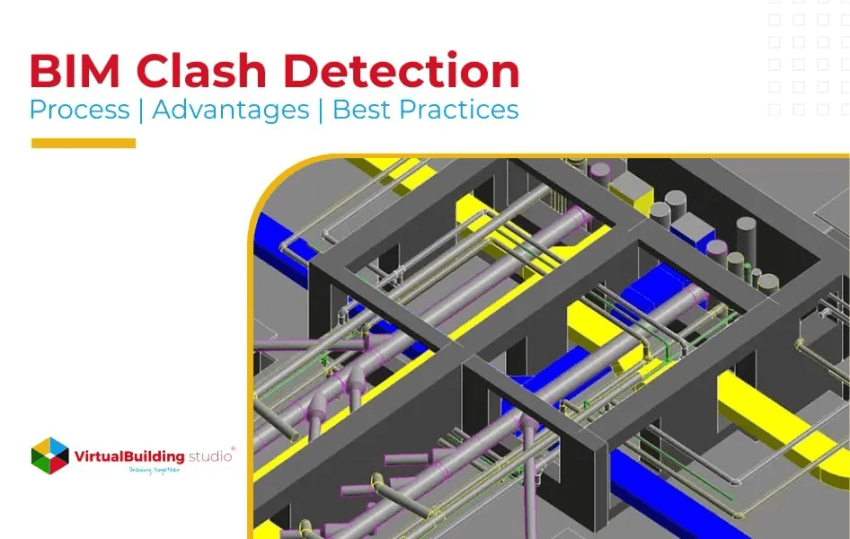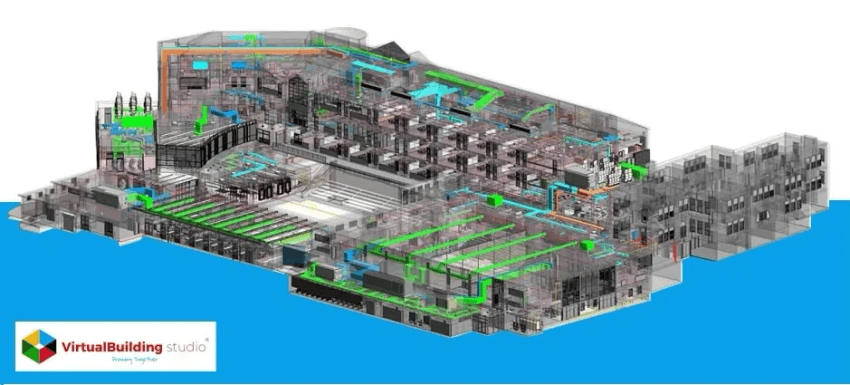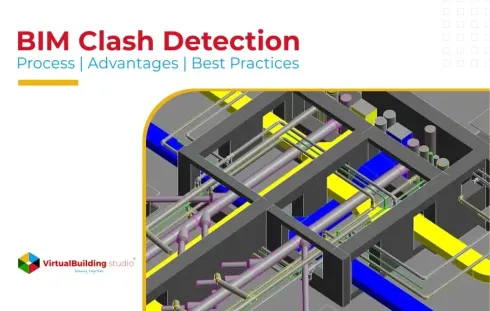
Architectural and Engineering design are dynamic fields with the involvement of several stakeholders to work on the desired requirements. The engagement of different stakeholders like contractors, engineers, designers, vendors, and suppliers, makes the process of project execution very complex. BIM Modeling services come to the rescue by providing a synchronized process that brings together all the stakeholders on the same page.
Leveraging the potential of BIM will ensure no surprises during the construction phase and highly accurate and precise execution of work. BIM Clash detection services enable the developer to create an error-free structure.
What is Clash Detection in BIM?
Architectural projects are a concoction of multi-disciplinary trades such as Structure, MEPF, Interior, Landscape, and much more. BIM Clash Detection services encompass the identification and resolution process of clashes between these various trades.

Architects, MEP consultants, and Structural engineers prepare the models independently, which might lead to the risk of different elements inadvertently overlapping with each other. Clashes are detected between various building elements with the integration of all individual trades.
These clashes can arise when different design components, like HVAC systems, structural elements, or conduits, overlap or interfere with the buffer zone of other building elements. These clashes are then highlighted and notified to the concerned design consultants.
The clash detection is executed again after resolving the existing ones to ensure overall coordination. BIM Modeling services play a significant role in determining the constructability issues before the commencement of building construction.
Cause of Clashes in the BIM Model
The expert engineers of that particular niche execute the process of BIM Modeling for various trades. When these different models are juxtaposed together, clashes between every model come to the fore. An architectural set is the first layout designed to mark the initiation of a project.
Structural engineers then design their 3D model that aligns with the architectural requirements. Consultants dealing with HVAC, electrical, and fire protection create their specific 3D models as per the architectural and structural layouts.
Each discipline’s 3D BIM model contains its dataset of documents, geometric data, project files, and other relevant information about the asset. BIM Clash detection services are incorporated when spatial coordination of individual models for a structure shows overlaps and conflicts. Some of the prominent reasons for clashes to occur in the BIM model are –
- Using the wrong low Level of Detail while modeling
- Design uncertainties or failures
- Working on a 2D format instead of a 3D BIM model
- The time constraints lead to a lack of accuracy
- The elements of the 3D model exceed the clearance values
- Building the project model by team members who lack expertise in the concerned domain
Benefits of BIM Clash Detection services for AEC stakeholders
Increased Accuracy in Installations and Project Drawings
BIM Modeling services facilitate coordinated fabrication and installation of drawings extracted from clash-free models. The building elements of the 3D model exude high geometric accuracy and installation precision.
The precision in fabrication ensures component manufacturing accuracy, which results in a significant reduction of manufacturing waste and fast component installation on the site.
The increased accuracy achieved with BIM clash detection services leads to lesser rework on projects, reduced project delays, and on-time project completion.
Reduced Iterations During Installation On-Site
Eliminating clashes or member interferences from the 3D model reduces design iterations during the installation of project components on the construction site. The drawings and 3D models can be referred to without any confusion, and the design can be finalized for further processing.
A reduction in the number of iterations saves time, reduces the project costs, and lowers the possibility of rework during actual construction.
Minimized Onsite Risks and Reduced Wastage
The lack of proper 3D visualization poses higher risks to the field personnel on construction sites. The 2D drawings might not align with accurate standards leading to site hazards. Without visualization trying to access hard-to-reach spaces can be a tedious and risky job for the site workers resulting in accidents, cost overruns, and project delays.
In addition to mitigating risks, clash detection also benefits in scheduling the site work and indulgence in precise project planning, leading to reduced material wastage and greater efficiency.
Clash Free 3D BIM Models with Increased Efficiency
The BIM modeling services offer benefits of greater accuracy and increased efficiency to the project stakeholders by eliminating clashes or any interferences in the early stages. The increased efficiency of the 3D model leads to better fabrication and installation of components on construction sites.
An advanced stage of the 3D BIM model is a 4D model with an added dimension of time stimulating a sequence of events for that particular project.
Software like Navisworks timeliner can be used by the team for extensive visualization and to schedule events for equipment, materials, and other logistic activities.
Types of Clashes in BIM
The architectural, structural, and MEP layouts pose various types of clashes. BIM clash detection services and MEP clash detection services help in identifying and resolving these clashes leading to error-free project execution. The different types of clashes deduced while BIM modeling are –

Hard Clash
Any two or more building elements or design components occupying the same space in a model create Hard clashes. These clashes increase the project cost and are difficult to resolve if discovered at the later stage of construction.
For instance, plumbing pipes or electrical conduits overlapping the structural elements create hard clashes. These clashes can be resolved while designing as per geometric rules.
Soft Clash
The absence of optimum spatial or geometric tolerance in a building element can result in creating soft clashes in the model. For instance, inappropriate clearance values for an air conditioning unit can create issues during maintenance, access, or safety runs. Appropriate standards should be set within the software to identify these clashes in advance.
Workflow Clash
A timeline conflict between contractor scheduling, material and equipment delivery, or any other time-related issues can create workflow clashes. For instance, scheduled cement delivery not aligning with slab casting.
The Adaptable Strategies for AEC stakeholders to Eliminate Clashes
- Integrating construction, engineering, and procurement
- The amalgamation of BIM with traditional workflows
- Enhanced communication and collaboration among designers in a common workspace
- Working in a common data environment (CDE) and adopting design coordination
The Significance of BIM Clash Detection Services
The modern architecture and construction industry work in compliance with the technological advancements revolutionizing the working culture. BIM Clash detection services hold a significant role in the AEC industry, especially with the increase in project complexity. The necessity of timely completions with reduced costs is deemed fit with clash detection offered with BIM modeling services.
The clash-free generative designing is gaining adherence in the industry and is critically considered by the project stakeholders for coordinated and integrated designing.
With everyone treading the path to sustainability, energy optimization, and resource conservation, the use of BIM clash detection services and MEP clash detection services will become crucial for the AEC industry in the coming era.



